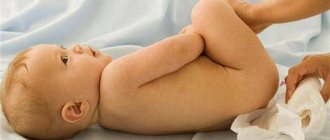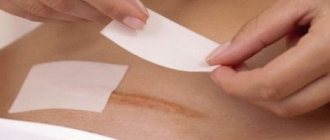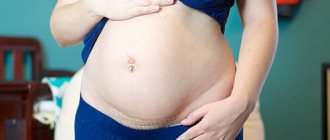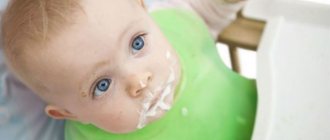Contents:
- Causes
- Classification
- Symptoms
- Treatment
- And other tips
- Preventive measures
Constipation is difficult or incomplete bowel movement or its absence for a long time (two days or more). Very often, such a nuisance happens to young mothers who want to enjoy communication with their baby, but there is simply no time for this, because the stomach pulls, becomes stone, and the feeling of fullness in the intestines and stomach poisons existence. Moreover, constipation after childbirth is far from a rare phenomenon, and in no case should you put up with it. First, you need to find out what factor provoked disturbances in the gastrointestinal tract, and only then begin to properly eliminate it.
Causes
There is a whole list of reasons why constipation occurs after childbirth: all of them are somehow related to the birth of the baby. If this trouble has overtaken you, try to analyze how your body is affected by the lifestyle you lead and find out what could provoke such disturbances in the gastrointestinal tract. Among the most common factors, doctors name the following.
Physiological reasons:
- changes in hormonal levels;
- taking antibiotics leads to the death of beneficial microorganisms that produce substances that stimulate intestinal motility;
- stretching, weakening, laxity of muscles (we are talking about the perineum and abdominals);
- immediately after childbirth, for a certain time, the uterus is enlarged and continues to put pressure on the intestines;
- gradual displacement of the intestines in the abdominal cavity to its usual place;
- disturbances of peristalsis (failure in intestinal motor activity);
- regular constipation after childbirth while breastfeeding is often explained by poor nutrition of the nursing mother herself, if she snacks on the go and consumes little water;
- congenital intestinal pathologies (elongated sections, for example).
Psychological reasons:
- constant, conscious suppression of the urge to go to the toilet, if a woman does not pay attention to the needs of her body and does not empty her bowels for a long time (for example, she has no time, since she devotes all her free time to the baby): in this case, the intestines stop producing natural signals for emptying;
- fear of strain from stitches from a cesarean section, laceration, episiotomy, or hemorrhoids;
- stress associated with child care and new status;
- overwork, chronic fatigue syndrome.
So the first advice from all doctors on what to do for constipation after childbirth is to find out the nature of this scourge. Listen to your own body, understand what is wrong with it, and eliminate the provoking factor. It should be borne in mind that depending on the causes and symptoms, the types of this disease may be different. Accordingly, treatment methods will differ.
Interesting fact . In 75% of cases, the cause of constipation after childbirth is dry eating.
Other methods for relieving constipation while breastfeeding
Proper nutrition, massage, and exercise will help you get rid of constipation after a cesarean section.
Proper nutrition includes the following steps:
- On the first day, a woman in labor should not eat. Drink more fluids. You can drink 1.5-2 liters of clean water per day. The liquid helps soften fecal debris.
- On the second day, mother includes low-fat fermented milk products in her diet. You should drink low-fat chicken broth. Drink water and other liquids in the same quantities. You can add baked or boiled vegetables and fruits. Eat bread only with bran. White bread causes fermentation, which is undesirable for constipation.
- On the third day, add a small piece of low-calorie cheese and 1 baked apple. You can eat oatmeal or boiled buckwheat in water. Divide the intake of products into 5-6 times. Wash down your meal with warm water or rosehip decoction. Drink liquid in large quantities.
Diet for mom after childbirth
| Authorized Products | Prohibited Products |
| Hercules, buckwheat, pearl barley porridge. | Semolina. |
| Black and bran bread. | White bread. |
| Boiled or steamed cabbage, carrots, broccoli, radishes. | Potatoes, legume products. |
| Apples, dried apricots, prunes. | Pears, blueberries, strawberries, nuts. |
| Curd products without dyes, fermented baked milk. | Fatty varieties of cheese. |
| Olive or sunflower oil. | Butter. |
| Uzvar, green tea. | Black tea, strong coffee. |
By following the stages of feeding and eating approved foods, the mother will ensure complete and easy bowel movement 3-4 days after surgery.
Gymnastics
- Lie on your left side on a flat surface.
- Bend your right leg at the knee and press it to your chest.
- The left leg lies directly on the surface.
- It is advisable to lie in this position for up to 7 minutes.
- Perform this step on the opposite side of the body.
Regular use of exercises 3-5 times a day leads to relief from gas formation in the intestines, pressure on the intestines increases, muscles become toned and fecal blockages are released.
Massage
It is necessary to massage carefully to prevent the seam from coming apart after the incision:
- For atonic type constipation, while lying in bed, bend your legs slightly. Move your hands around the umbilical area, rubbing the skin, then down to the perineum. Session duration is 5 minutes.
- For spastic constipation, massage is carried out with gentle clockwise movements over the entire area of the abdomen for up to 5 minutes.
Massage activates muscles and helps relieve severe constipation.
Classification
If you suffer from constipation after childbirth, try to determine what kind of constipation it is. Correct diagnosis will help you choose the right treatment method. Doctors distinguish two types.
Spastic
Characterized by the following features:
- increased intestinal tone;
- as a result - difficulties in peristalsis;
- caused by psychological reasons;
- the formation of the so-called “sheep feces”, when very dense, compressed stool comes in small portions;
- symptoms include paroxysmal pain in the left side of the peritoneum, nausea, flatulence, lack of appetite, nervousness, fatigue.
To treat spastic constipation after childbirth, a young mother is recommended first of all to establish her daily routine (get enough sleep, calm down, rest more) and put her diet in order (eat regularly, not on the go, drink more water, take into account the lists of recommended and prohibited foods) .
Atonic
This type of constipation after childbirth has the following symptoms:
- decreased tone of the intestinal muscle wall;
- the result is slow, sluggish peristalsis;
- reasons: caesarean section, poor diet, medication;
- symptoms: painful bowel movements, formation of feces in huge portions, nagging, aching pain in the abdomen, feeling of fullness in the intestines, nausea, flatulence, apathy, lack of appetite;
- complications include tears (of varying sizes) of the mucous membrane in the anus and rectum, and the appearance of blood on the surface of the stool.
To eliminate atonic constipation after childbirth, home measures will not be enough. To avoid complications, in this situation the best decision is to quickly consult a doctor.
If constipation after childbirth is dictated by intestinal pathology (lengthening of its sections), then it is not classified as one of the above groups, although in terms of symptoms it will resemble spastic. However, it will require completely different treatment. If you are not able to independently determine why you have become a hostage to such trouble, it is better to immediately go to the doctor and tell him about your problems. Certain signals from your body will tell you exactly when to sound the alarm.
Keep in mind... ... if you suffered from constipation before pregnancy, prepare for the problem to get worse after giving birth. Therefore, do not forget about preventive measures throughout the 9 months.
MICROLAX®: help with constipation after caesarean section
MICROLAX® is a microenema that helps gently relieve constipation. This is a drug with a high safety profile and has no age restrictions for use. Within 5–15 minutes¹, active substances help soften stool, making it easier to remove from the body. Thanks to local application, microenema components do not enter the general bloodstream.
MICROLAX: how to feel joy again?
1Dietetics. Management. Edited by A. Yu. Baranovsky. 4th edition; St. Petersburg 2012
2 In accordance with the instructions for medical use of the drug MICROLAX®, the drug promotes the onset of action 5–15 minutes after use.
Symptoms
To avoid getting into trouble, you need to know when and under what signs constipation after childbirth can become a real problem. Often, young mothers, due to their emotional stress, either begin to sound the alarm too early, or it is too late. The symptoms of the disease will tell you when to see a doctor and start treatment:
- complete absence or difficulty (small or large portions, pain) of bowel movements for 2 days or less than 3 times a week;
- paroxysmal pain in the left side of the peritoneum;
- nagging, aching pain in the abdomen,
- nausea;
- flatulence;
- cracks, pain in the anus;
- lack of appetite;
- constant belching;
- nervousness, fatigue, irritability, apathy;
- the need to strain during bowel movements;
- sleep disorders;
- bloating;
- feeling of fullness in the intestines.
If at least some of these symptoms are present, timely measures must be taken. It is better not to engage in self-treatment (especially if we are talking about atonic disease): only a doctor can advise what to do at home and what medications can be used to treat postpartum constipation.
Be careful! Nausea and flatulence, accompanied by a temporary absence of bowel movements after childbirth, do not always indicate constipation. First think: do you forget to eat on time? Maybe the stomach has nothing to digest?
Clinical manifestations of constipation
To avoid many problems, you need to have an idea of how constipation manifests itself in women after childbirth. Knowing the symptoms is very important, since most women go to the hospital either with mere trifles, or when it is too late.
So, you need to go to the doctor if you have:
- bowel movements are poor or absent for two or more days;
- pain in the abdominal area;
- nausea;
- blood in the stool;
- constant belching;
- increased temper;
- lack of appetite;
- hypersomnia;
- feeling of fullness in the intestines.
The presence of a combination of some of the above symptoms indicates that the woman has constipation after childbirth. What to do in this case, and what measures to take to fix the problem? Let's look further.
Treatment
After the doctor determines the causes and type of the disease, he will advise how to get rid of constipation after childbirth in your particular case. The course of therapy includes both medications and traditional recipes. Be extremely careful with any of them, especially when breastfeeding, so as not to harm the baby.
Medications
Drug treatment of constipation after childbirth is carried out only with the permission of a doctor. Most often it includes the use of various suppositories, enemas and laxatives.
- Enemas
A therapeutic enema, which improves intestinal motility and dilutes dense stool, is very helpful for postpartum constipation. It can be made from flaxseed infusion (brew 1 heaping tablespoon with 20 ml (a glass) of boiling water, leave for 3 hours), but only warm. In this case, the total mass of infusions should not exceed 50 ml. You will need 3-4 such procedures per day.
- Laxatives
When breastfeeding after childbirth, laxative medications for constipation such as Fortrans, Duphalac, Forlax, and lactulose syrup are allowed. Doctor Theiss, Regulax, Dulcolax (Bisacodyl), Gutalax, Chitosan-Evalar, horse chestnut products are prohibited. For spastic forms, you cannot take Sennalax, Glaxenna, Trisasen.
- Candles
Very often, after childbirth, doctors prescribe suppositories for constipation, which stimulate bowel movements even in emergency cases. However, one must take into account the fact that this is rather first aid, and not a full treatment of the disease. They provide only temporary relief, so there is no need to use this method regularly. In particular, if there has been no bowel movement for more than 3 days and no means help, glycerin suppositories are prescribed, which will significantly alleviate the condition of the young mother.
The best medication for constipation after childbirth is the one that the doctor prescribes as a result of the examination. If you decide to help the main therapy with folk remedies, of which there are a lot scattered across the Internet, do not forget to inform your specialist about this and listen to his opinion on this matter.
One more tip! After giving birth, do not get carried away with laxatives, suppositories, or enemas, because the body gets used to them very quickly and stops responding.
Folk remedies
It is believed that treating constipation after childbirth with folk remedies is much more useful and effective than with medications, since the former are distinguished by their naturalness. In practice, this does not always work out this way, because infusions and decoctions of plants used in folk medicine are highly active and sometimes have a very powerful effect on the intestines, which can either aggravate the situation or lead to the opposite result (provoke diarrhea). Therefore, young mothers should be extremely careful when deciding on such treatment.
Spastic constipation
- Fig decoction
Brew 2 tablespoons of washed figs with a glass (200-250 ml) of boiling water (milk or plain water). Cool. Take 1 tablespoon as often as needed.
- Potato juice
Pass fresh, peeled potatoes through a meat grinder (you can turn them into puree in a blender), squeeze out the juice, dilute with water in equal (1:1) proportions. It is advisable to take 50 ml 25-30 minutes before meals (it turns out three times a day).
- Medicinal collection
In equal proportions, combine stinging nettle, anise fruit, valerian officinalis, peppermint, wild strawberry, and chamomile. Brew 1 tablespoon of the resulting dry mixture with 200-250 ml (a glass) of boiling water, let it brew thoroughly (at least 1.5 hours) in a tightly closed container. After straining, take 100 ml in the morning and evening.
Atonic constipation
- Herbal collection No. 1
Mix the fruits of cumin, fennel, anise (take equal proportions). Brew 2 teaspoons of the resulting aromatic mixture (200 ml) with a glass of boiling water, leave for a quarter of an hour (no more), after straining, drink 60 ml 3 times a day, about 20-30 minutes before meals.
- Herbal tea No. 2
Mix oregano, rowan fruits, blackberry leaves, stinging nettle, and fennel fruits in equal parts. Brew 1 tablespoon (full) with 200 ml (glass) of boiling water, leave for 1.5 hours in a thermos, strain. For constipation, take 60 ml three times a day after meals.
Both folk and medicinal remedies for constipation after childbirth should be used competently, without fanaticism, on the recommendation of a doctor. This will allow you to quickly cope with the disease and enter a normal rhythm of life. To prevent the situation from recurring after recovery, prevention is necessary.
How to help your intestines work properly
If such a phenomenon as constipation occurs after a cesarean section, it is necessary to figure out what to do for the mother herself. If you cannot help yourself, then you need to visit a doctor. After all, when stool stagnates in the intestines, which release toxins, the whole body suffers.
There are several ways to overcome bowel problems after a cesarean section.
When choosing a remedy for constipation, you need to take into account that not all of them are allowed for breastfeeding women. Therefore, it is always better to consult a doctor first.
There are several known remedies that are safe in this regard, but give quick results:
Regardless of whether a woman is breastfeeding her baby or not, rectal suppositories are allowed to be used:
The prescribed drug is administered through the anus once a day in the morning after breakfast. Overdose may cause diarrhea. And loose stools after a cesarean section are no less undesirable.
There are also folk remedies to relieve constipation. They will help relax the intestines without affecting lactation and the quality of breast milk:
- Fig-based decoction. The berries are crushed, measure out 2 tbsp. l. and add 200 ml of water or milk. Prepare the drug for 20 minutes. If you take it 1 tbsp. 4 - 5 times a day, the intestines will function clearly.
- An infusion of a mixture of herbs. You need to take equal parts of valerian root, anise fruit, nettle leaves, mint, strawberries and chamomile flowers. 1 tbsp. l. the assortment is placed together with 200 ml of boiling water in a thermos and kept for 2 hours. Drink the entire volume in two doses. This composition is indicated for spastic constipation.
- A decoction of fennel fruits, anise, caraway seeds. Take the same amount of them, measure out 1 tbsp. l. for 200 ml of boiling water. The product is prepared in a thermos for 2 hours. The entire volume is consumed per day in three doses.
And other tips
A few more useful tips will help support basic therapy and eliminate even the most severe constipation that poisons a woman’s life after childbirth.
Recommended foods:
- vegetable oils;
- wholemeal bread;
- bran;
- muesli;
- oatmeal;
- grated boiled beets;
- steamed vegetables;
- a glass of kefir before bed.
Prohibited foods:
- White bread;
- semolina;
- legumes;
- strong tea;
- blueberry;
- walnuts;
- wheat bran;
- hard cheese;
- polished rice;
- quince;
- slimy soups;
- pear;
- strawberries and currants.
Drinking regime:
- Drink as much clean water as possible.
- Dried fruit compotes.
- Be sure to start the day with a glass of water on an empty stomach;
- Avoid carbonated drinks and whole milk.
- Dairy products.
- Gooseberry decoction.
Carminative fees:
- stinging nettle;
- anise fruit;
- wild strawberry;
- valerian root;
- peppermint;
- chamomile.
Herbal baths (after each toilet):
- valerian;
- heather;
- hawthorn;
- Adonis;
- Melissa;
- chamomile;
- peony;
- fireweed;
- mint.
If you suffer from hemorrhoids and constipation at the same time after childbirth, it is recommended to irrigate the anus with a cool shower after each trip to the toilet.
Physical activity . Even very severe constipation does not like physical activity. Therefore, after giving birth, try not to sit in one place, but to be constantly on the move: walk more, do special postpartum exercises (Kegel exercises are especially useful), sign up for a swimming pool or bike ride.
How to avoid constipation during the postpartum period
To avoid postpartum constipation, as well as to get rid of existing problems, you must first of all develop the right menu. At the same time, taking into account what foods can be consumed while breastfeeding a baby. For constipation, it is useful for a nursing mother to include buckwheat, millet and pearl barley porridge, muesli, vegetable oils, and black bread in her diet. It is very important to eat enough vegetables every day. Immediately after giving birth, it is useful for a woman to eat beets and carrots, zucchini, pumpkin, and drink dried fruit compote.
A light compote made from gooseberries is also useful for constipation. To prepare it, you need to take one tablespoon of berries and one glass of water. After this, the decoction is prepared for 10 minutes. At the same time, you should not include strong tea, soups with a slimy consistency, semolina and rice porridge, blueberries, pears, legumes, walnuts, and white bread in the menu, as these products have a binding effect. Hard types of cheese can also significantly slow down intestinal activity.
To normalize intestinal functions, you should drink a sufficient amount of liquid: it can be plain water, compote or weak tea. After waking up in the morning, you need to drink a glass of cold water on an empty stomach: this method effectively helps stimulate intestinal function. Another recommendation is to drink a glass of warm water with the juice of a third of a lemon dissolved before bed.
Preventive measures
Usually, young mothers calm down very quickly when constipation goes away after childbirth and stop caring about it. As a result, everything can happen again and even get worse. To prevent such developments, we must not forget about the necessary and useful preventive measures.
- Do not get carried away with taking medications.
- Regularly perform a set of postpartum exercises aimed at strengthening the muscles of the perineum and peritoneum.
- Follow a special diet (see above lists of recommended and prohibited foods).
- To avoid constipation after childbirth, it is imperative to maintain the correct drinking regime.
- Constantly be examined by doctors if you have any congenital intestinal pathologies.
- After childbirth, be attentive to the needs of your body; at the first natural signals for bowel movement, go to the toilet.
- Rest regularly, sleep more, walk.
- Calm down, don't worry about trifles.
- Be constantly on the move.
To cope with constipation, which poisons life after childbirth, follow these recommendations. Make sure that there are no provoking factors (especially psychological ones), consult a doctor in a timely manner and do not forget about preventive measures. If you do everything correctly, you can minimize the harm and unpleasant consequences of this disease, so that it does not interfere with enjoying life and pleasant communication with your newborn baby.
Treatment of constipation in nursing mothers
First, you can try to cope with the problem without using medications. Constipation in a nursing mother is sometimes easily eliminated by making lifestyle adjustments.
- Establishing a diet. It should be remembered that each new product should be consumed in small doses. If it does not cause a reaction in the child, then the amount can be increased.
Fermented milk products (kefir, fermented baked milk), dried fruits (especially prunes), and decoctions of medicinal herbs are useful for intestinal function. - When breastfeeding, you need to drink a lot of liquid per day, most of which should be plain boiled or raw water.
- Elimination of conflict and stressful situations. When breastfeeding a child, this is an important rule, the observance of which will not only avoid problems with stool, but also improve lactation.
- There are a number of exercises that are allowed after childbirth. By doing them, you can force the intestinal walls to work and strengthen your abdominal muscles.
- Spend as much time as possible in the fresh air. Walking is very useful.
If your stool does not improve, you can treat constipation with medication. During breastfeeding, medications containing lactulose (for example, Duphalac) are allowed. Lactulose is not absorbed by the stomach and intestines, softens stool and forms beneficial bacteria that contribute to its natural excretion.
Glycerin suppositories can help relieve constipation. They soften stool and make intestinal motility work. If used correctly, they do not cause addiction to the body. Are safe during breastfeeding. Their action is aimed exclusively at removing feces from the intestines. It has no effect on other organs.
Candles should not be placed if there are cracks or wounds in the anus.
When breastfeeding, you should not overuse medications or harmful foods. This way you can eliminate a number of problems with stool. Constipation should only be treated under the supervision of doctors and follow their recommendations.










